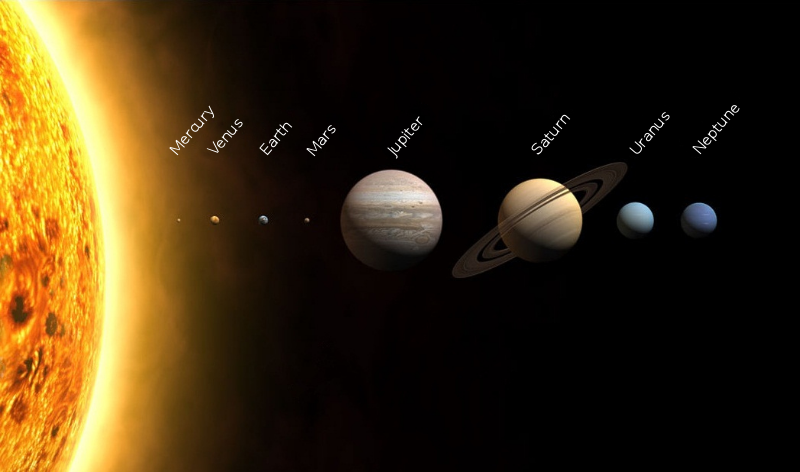Before daybreak these next several mornings – April 14, 15 and 16, 2020 – watch for the moon to sweep by three morning planets: Mars, Saturn and Jupiter. You’ll be looking along the ecliptic, the annual path of the sun – and the approximate monthly path of the moon – in front of the constellations of the zodiac. Look southeast to south from the Northern Hemisphere. Look pretty much east from the Southern Hemisphere. For all of us around the globe, the moon is waning now, appearing closer to the sunrise each morning.
And, for all of us, on the morning of April 14, the moon’s illuminated side will be pointing right at this compact line-up of planets. Then on the mornings of April 15 and 16, you’ll see the moon in the planets’ midst.
Jupiter is easily the most brilliant of the trio of planets, beaming some 14 times brighter than either Saturn or Mars. Even so, Mars and Saturn are respectably bright, shining as brightly as 1st-magnitude stars. So you’ll be looking for a little line of three bright objects, with one of them (Jupiter) very much brighter than the other two. As you gaze toward this trio, know that Saturn lies between Mars and Jupiter.
Of course, these worlds shine by reflecting the light of the sun. At present, Mars and Saturn are about equally bright. But it’s fairly easy to distinguish these two worlds by color. Mars glowers red while Saturn exhibits a golden hue. If you have difficulty seeing color with the eye alone, try your luck with binoculars.

Mercury, the innermost planet, is nominally a morning planet all though April 2020. However, as seen from the northern half of Earth now, Mercury will be buried deep in the glow of morning twilight. At the equator, Mercury rises about one hour before the sun. At 35 degrees south latitude, Mercury rises about 1 1/2 hours before sunrise; you might see it from there.

So four of the five bright planets may be found in the April 2020 morning sky. The brightest planet of them all – Venus – shines in the west after sunset, and will remain a fixture of the evening sky for the next 1 1/2 months. Watch for Venus to shine at its brilliant best as the evening “star” in late April 2020.
Mercury and Venus are called inferior planets, because they orbit the sun inside Earth’s orbit. Inferior planets exhibit the whole range of phases, much like our own moon does. You need a telescope to watch these changing phases, however. Right now presents a great time for watching Venus through a telescope because Venus is now displaying a waning crescent phase, which is much easier to discern than a gibbous phase.

On the other hand, a superior planet is a planet that orbits the sun outside Earth’s orbit.
Bottom line: Get up before dawn these next several days – April 14, 15 and 16, 2020 – to see the moon and the bright superior planets in the morning sky: Mars, Saturn and Jupiter.











